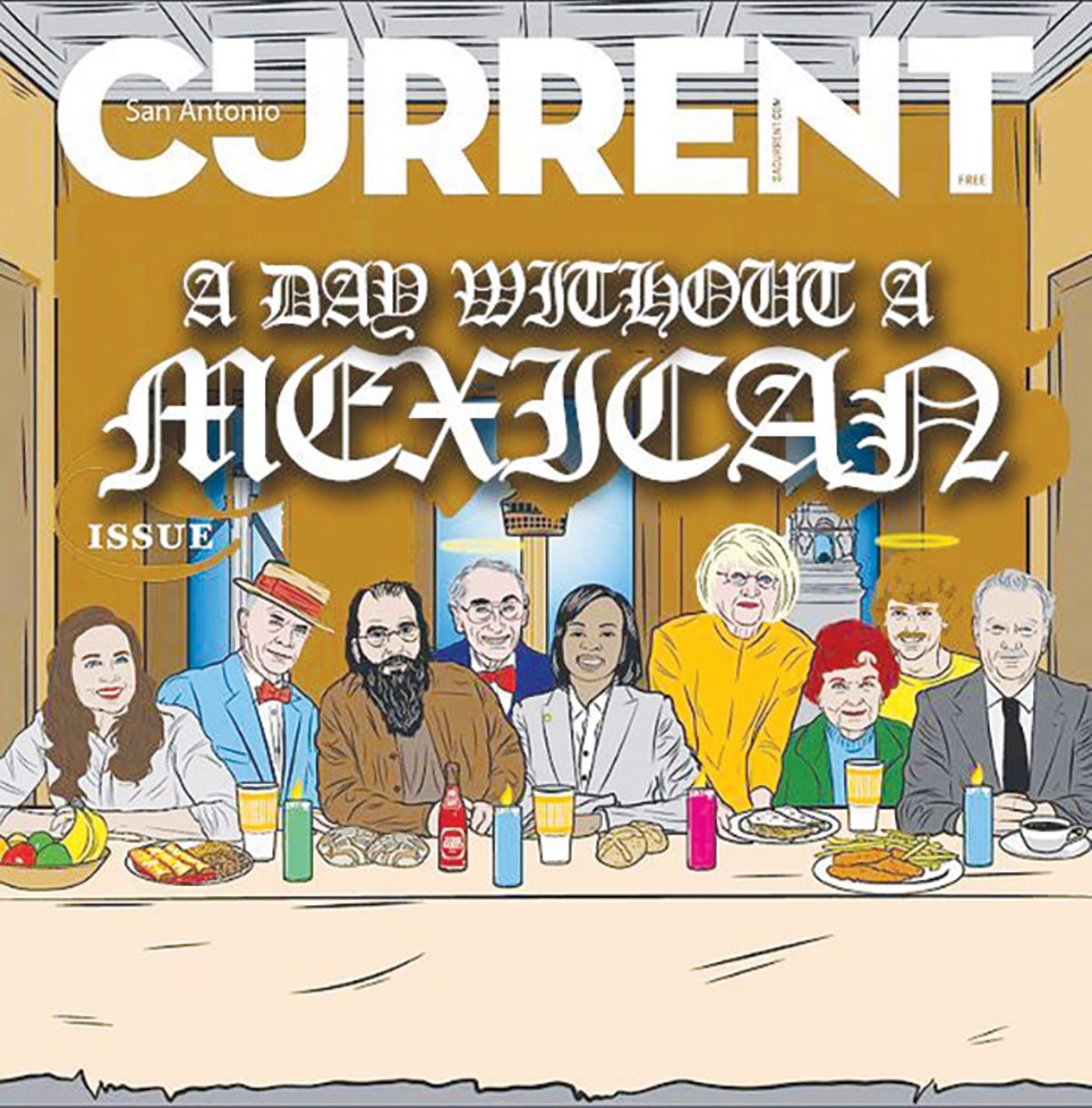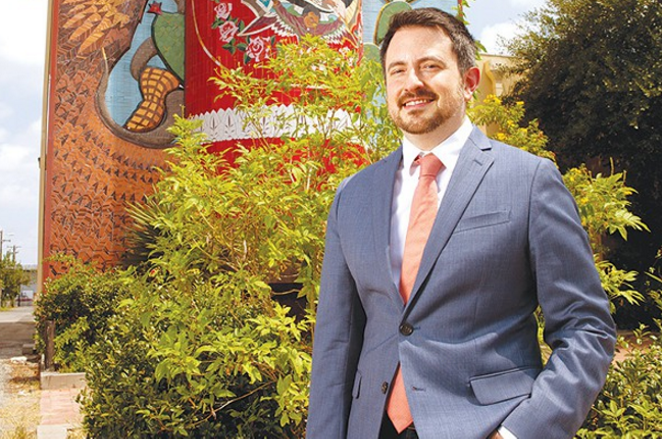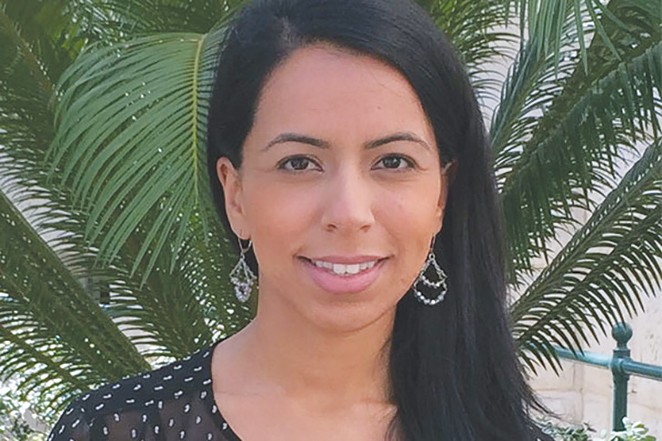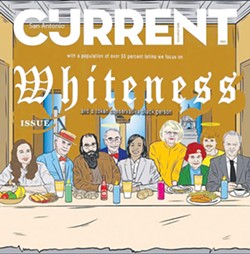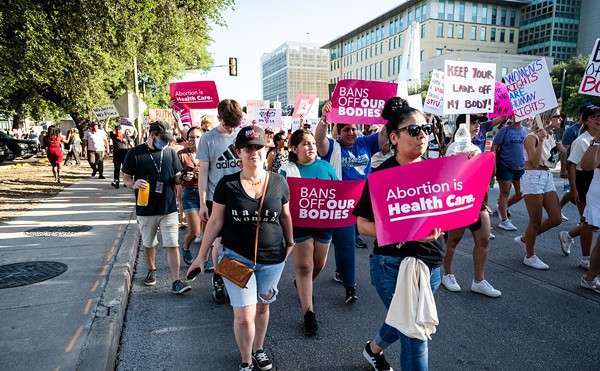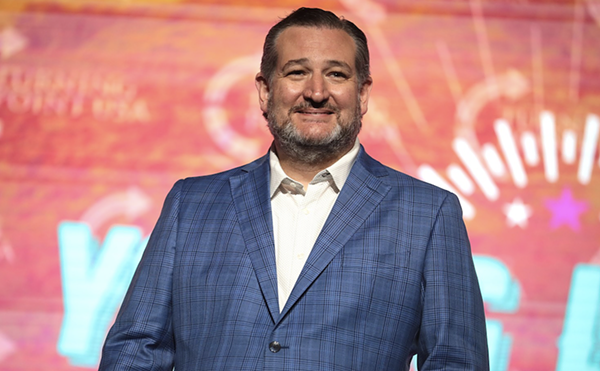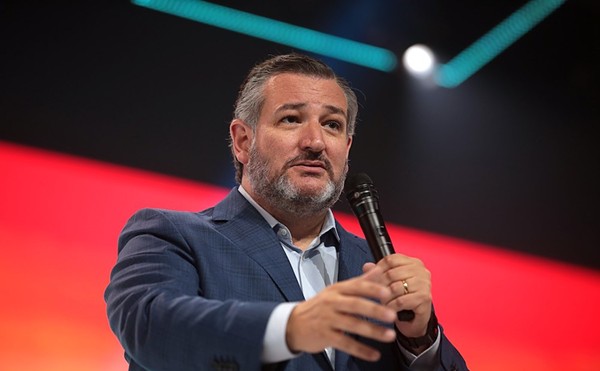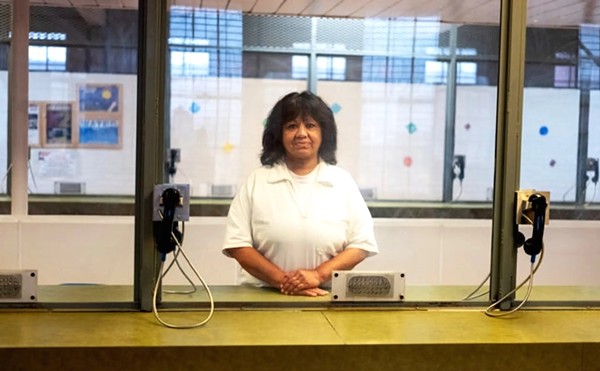To say we closed the month of March on a bad note is an understatement. Put bluntly, we half-assed our Badass Issue. With nine past and current movers and shakers (four women, two gay men and an over-abundance of whiteness in front of a spread of Tex-Mex food under an Old English font, no less) we white-washed and appropriated San Antonio's history.
The Facebook posts calling us out (some of which we've included here), the Instagram posts modifying the cover and the emails and calls we received were loud and clear.
We failed to reflect the majority Latino community, the city at large. We alienated 60 percent of the population. We didn't do our jobs.
For transparency's sake, the San Antonio Current operates as a weekly print publication that has to play a part in the 24-hour news cycle. A staff of two general news reporters, a music editor, a digital content producer, two senior editors, two dozen freelancers and a group of rotating interns all work toward five objectives: to serve the city as tastemakers, to be a daily destination for readers, to aggressively tell stories, to provide a new perspective and, lastly, to improve the community around us.
We didn't do that.
Instead, we alienated more than half of San Antonio's population in one fell swoop. We failed to honor our own editorial standards, and, more importantly, the city we're privileged to write about.
For that, we apologize. But we also use the occasion to improve our publication, and, hopefully, the city as a whole. Our editorial decision-making will evolve to keep us from ever making the same error, and to ensure that the magazine reflects San Antonio's valuable diversity – of ethnicity, class, sexual orientation and all the other ways we're different. Citywide conversations on power disparity, diversity and inclusion have to keep going on all around us, and we will be a part of that.
Our mistake, of course, came on the heels of "SA2020 Talks: Diversity and Inclusion in the Arts" held on Tuesday, March 29. Though well-intentioned and shaped by four entities, which included the boards of Contemporary Art Month San Antonio and the Guadalupe Cultural Arts Center, and the City's Diversity and Inclusion office, the panel failed to include a Latina artist — the very same reason the Guadalupe withdrew from hosting this year's CAM Perennial exhibition.
The Guadalupe's executive director, Jerry Ruiz, who began his work with the Guadalupe on May 4, 2015, said in a statement that the organization withdrew from the Perennial because of its lack of a Latina artist.
Mistakes like the Badass Issue and the SA 2020 talk shouldn't happen in this city. So to learn from them – to advance the collective dialog about diversity and inclusion and to ensure they don't happen again – we spoke with civic leaders, diversity experts and people who were justifiably just pissed off. Here's what they told us:
No Easy Fix
Institutional discrimination and oppression won't be solved overnight. But as the justifiable and painful criticism about the Badass cover escalated to include commentary by Congressman Joaquin Castro and State Rep. Diego Bernal, it was time to look at the institution that allowed the mistake to happen.
"It's easy to misconstrue our numbers and even some of our individual accomplishments as community mobility or ascension. [Latinos] still have tremendous issues of poverty, health and issues with public education. Those issues will never get addressed if we're not part of the conversation. I believe when we're left out — which is a hard thing to do considering how many of us there are — that people feel it makes it easier to ignore the issues that befall our community in a very specific, concentrated, insidious way," Bernal said.
For SA2020 President and CEO Molly Cox, hindsight is, well, 20/20.
"In an effort to find a neutral voice we ended up excluding an entire group of people," Cox said. "Now, it's so dumb that we didn't think about it. We had Latinas helping us create the panel. It was just dumb."
Though all four parties were tasked with approving the panel — made up of Jon Hinojosa of Say Sí, Kiran Bains of the City of San Antonio Diversity and Inclusion Office, Cruz Ortiz of Snake Hawk Press and Veronique Le Melle of Artpace San Antonio — all are now acutely aware of the oversight.
For Ruiz, the error showed that inclusion must be an active, deliberate choice.
"We all signed off on it. It was a shared mistake from all ... entities that a Latina was not included. That just shows that no one's immune to it. I sat there with two Latina board members and approved it. One of the three of us should have seen that," he said.
Critics of the panel argued that Cox, as moderator, should have just called one of the many Latina artists in attendance to the panel on the spot. Ana Fernandez, a local Latina visual artist, suggested that at the time. When it didn't happen, she left.
"I'm surprised more people didn't walk out. For me to stay there would have legitimized that farce," Fernandez said.
But all wasn't lost. Bains, as the person responsible for diversity in local government, gleaned that she'll have to dive into the history of arts and culture in San Anto to make any headway.
"I think there was a space needed for that expression of anger and frustration to be spoken and heard," Bains said. "It helped me recognize the learning I have to do, and making sure folks that are involved in shaping the office, that process is also diverse."
A native San Antonian of Indian heritage who grew up in the city's Sikh community post-9/11, Bains acknowledges the privilege she was afforded by attending blue ribbon schools on the city's North Side and later St. Mary's University. After graduating, Bains worked in international conflict resolution and peace building in war-torn areas for nearly a decade.
And she acknowledges the joining of individual responsibility and institutional responsibility when it comes to diversity and inclusion.
"How did all these things happen? Why didn't it come to my mind?" she pondered out loud over coffee. "There's an overlap there with the institution and individual. We individually have to take responsibility because, in many ways, we're enforcing institutional discrimination. Carrying the conversation forward and affecting change," Bains said.
Orlando Graves Bolaños, a two-year volunteer and board member with CAM, said the organization is taking this time to listen to the community.
"We'll be meeting in the near future to hash this out, and there will be very specific things, I'd imagine that will come from that — how we organize ourselves, certainly about how we transmit what we do so that everybody knows how we do it," Bolaños said.
For CAM that means, among other things, helping clarify the process for choosing artists for the Perennial, broadening their timeline, consciously soliciting curators with varied backgrounds and raising funds for a searchable, comprehensible database of SA-based contemporary artists.
The Guadalupe is working on clarifying language for their partners going forward. The CAM board will meet in mid-May to discuss the organization's next step.
"I think all of us are humbled by this experience and we have our mouths shut and we're listening. This is not a moment for us to justify anything or make excuses, what we're listening to is how we can stay true to the community outcry and the art community that does have some criteria as well," Bolaños said.
Beyond the Arts
The Current is also humbled – we aren't going to make excuses for our recent lapse. Ruiz, the Guadalupe's director, pointed out the dangers of doing so as the rationale for withdrawing from CAM's Perennial exhibition.
"It's not just exclusion but appropriation, which was one of the reasons that led me to withdrawing from CAM," Ruiz said. "We worry about gentrification, communities being erased, appropriation of spaces, of culture. I think we're all caught in that larger trend and it's something we have to be aware of. I don't believe there's maliciousness behind it, but it's a bigger trend we're looking at."
Mistakes such as the Current's allow deep-seated fears and concerns about cultural erasure and appropriation in a rapidly changing but history-rich city to bubble up to the surface.
"The reason there's so much anger about [exclusion] is because San Antonio is unique. It's a majority minority city and yet our experiences are not always being reflected or depicted, or our leaders and artists in the minds of many, aren't given the proper credit," Ruiz continued. "I think people are afraid of losing the authenticity of it and of not seeing those traditions and contributions honored."
For one reader, the omission of Mexicans from our cover prompted her to email a series of questions on our editorial process.
"Cultural appropriation is hard to describe. But when you see it you know what it is," Denise Ojeda said via telephone. "The cover to the Badass piece was very much that for me, depicting our culture in a very pop art way: the Last Supper, the candles, the pan dulce. I thought 'Oh, that's what that looks like and feels like, a throwback to someone's culture, how are they not going to get a seat at the table?'"
Chris Davila, an area arts advocate who voiced her concerns on the lack of Latinas on the SA2020 Talks panel, shared ways to keep inclusion at the forefront of the city's and the Current's consciousness.
"Inclusion has to be a deliberate choice. Diversify people on your staff. It's really easy, and San Antonio is moving in this direction with new people coming in," Davila said. "Everyone I think is forgetting about people who helped build this city who are Latino, who are doing a lot of the work."
Denise Hernandez, a TedxSan Antonio speaker on systemic oppression, ethnic studies and authentic San Antonio, says the cover, the panel, the Perennial all reflect a focus on San Antonio culture but not necessarily San Antonians.
"I don't want to see us become Austin in that regard. A lot of people don't even know they're caught in a situation where they're oppressed and that's a bigger issue," Hernandez said. "I think we have to understand ourselves first. Once people get that idea, we're just trying to get them to understand we're here, we matter, our voices matter. It's a matter of we want the same opportunities and access to things and treatment."
We're sorry, San Antonio. Your voices do matter, and we promise to double down on our effort to make sure they're heard.

